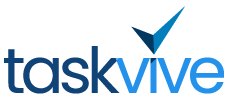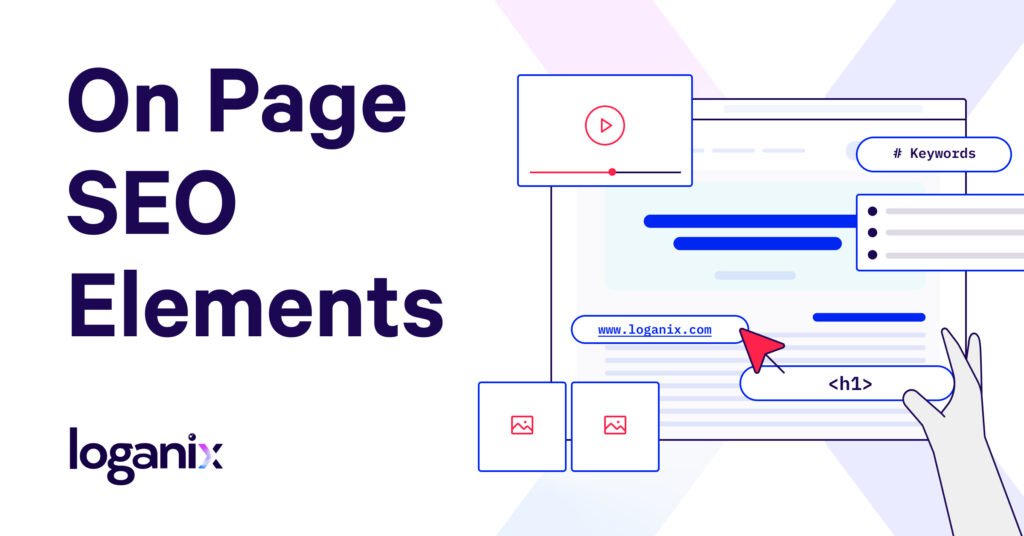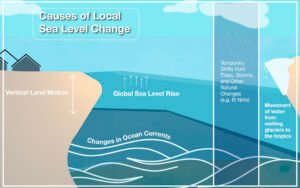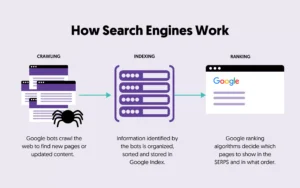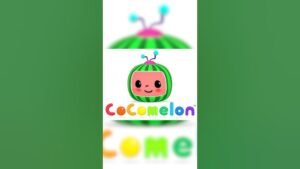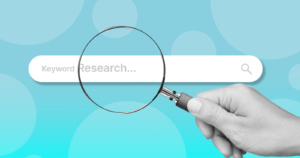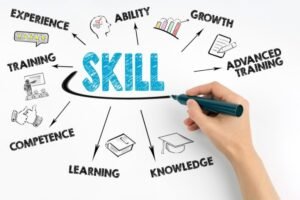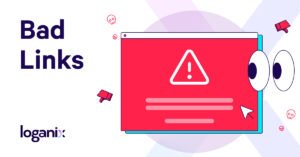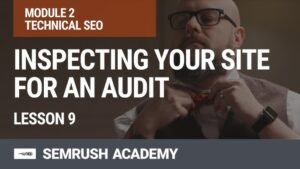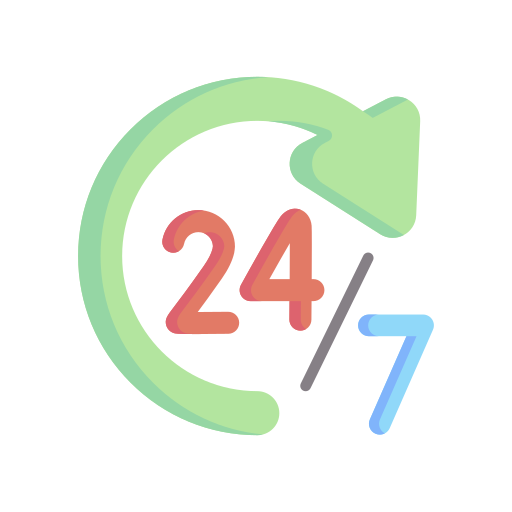On-page elements are crucial for SEO success. They help search engines understand your content better.
In today’s digital world, having a strong online presence is essential. On-page elements play a key role in improving your website’s visibility and ranking. These elements include title tags, meta descriptions, headers, and more. They ensure your content is optimized for both users and search engines.
Understanding these elements can significantly boost your SEO efforts. This blog will guide you through the important on-page elements. It will explain how they contribute to your website’s performance. By the end, you’ll have a clear understanding of how to optimize your web pages effectively. Let’s dive in and explore the world of on-page SEO elements.

Credit: loganix.com
Title Optimization
Title optimization is crucial for on-page SEO. It ensures your content ranks well. A well-crafted title draws users in and improves click-through rates.
Crafting The Perfect Title
Your title is the first thing users see. It should be compelling and clear. A good title is both informative and engaging.
Consider these points when crafting your title:
- Keep it under 60 characters.
- Make it descriptive of the content.
- Include a primary keyword.
- Ensure it matches user intent.
Using Keywords Effectively
Keywords play a vital role in title optimization. Proper use of keywords can improve your search engine rankings.
Here are some tips for using keywords effectively:
- Primary Keyword: Place it at the beginning of the title.
- Secondary Keywords: Use them naturally. Avoid keyword stuffing.
- Variations: Use synonyms or related terms for better reach.
Avoid overloading your title with too many keywords. Focus on readability and relevance.
To summarize, title optimization involves crafting engaging and keyword-rich titles. This attracts users and improves SEO performance.
Meta Descriptions
Meta Descriptions are brief summaries of web pages. They appear under the title tag in search engine results. These descriptions serve as a preview of the content. They play a crucial role in attracting clicks. Crafting effective meta descriptions can greatly impact your website’s SEO performance.
Writing Compelling Descriptions
Writing compelling meta descriptions involves creating a clear and concise summary. Each description should be unique and relevant. Aim for 150-160 characters. This ensures the entire description is visible in search results.
Use active voice and include a call to action. Phrases like “learn more,” “discover,” or “get started” can encourage clicks. Highlight what makes your content valuable. Appeal to the user’s needs and curiosity.
Incorporating Keywords
Incorporating keywords into your meta descriptions is vital. Include primary and secondary keywords naturally. This helps search engines understand the page’s content. It also increases the chances of users clicking on your link.
Ensure the keywords fit seamlessly into the description. Avoid keyword stuffing. It can appear spammy and deter potential visitors. Instead, focus on readability and relevance.
Here is a simple table to understand the key points:
| Element | Guideline |
|---|---|
| Length | 150-160 characters |
| Voice | Active |
| Keywords | Include primary and secondary naturally |
By focusing on these elements, you can create effective meta descriptions. This will help improve your website’s visibility and attract more visitors.
Header Tags
Header tags are key elements in on-page SEO. They help organize content and make it easier for search engines to understand the structure. They also improve the user experience by breaking up text into manageable sections.
Importance Of H1 Tags
The H1 tag is the main header of a page. It should include the primary keyword or phrase. This helps search engines understand the topic of your page. It also grabs the reader’s attention and provides a clear topic.
Each page should only have one H1 tag. This ensures clarity and focus. A well-crafted H1 tag improves SEO and user engagement.
Using H2 And Tags
H2 tags are used for subheadings under the H1 tag. They break down the content into smaller sections. This makes the text easier to read and scan. Each H2 tag should include relevant keywords.
H3 tags are subheadings under H2 tags. They further organize content into specific points. Using H3 tags helps create a clear hierarchy. This improves readability and SEO.
Both H2 and H3 tags should be used strategically. They should guide the reader through the content. Proper use of these tags enhances the overall structure of your page.

Credit: www.sprintzeal.com
Content Quality
Ensuring high-quality content on your website is essential for attracting and retaining visitors. Quality content doesn’t just inform; it engages and encourages users to return. This section will cover the critical aspects of content quality, focusing on creating valuable content and avoiding duplicate content.
Creating Valuable Content
Creating valuable content means offering information that is useful to your audience. Here are some tips:
- Understand your audience’s needs.
- Provide clear and concise information.
- Use subheadings to organize your content.
- Include relevant keywords naturally.
Valuable content should solve problems, answer questions, or entertain. Use simple language to ensure everyone understands your message. Break long paragraphs into shorter ones. This improves readability and keeps the audience engaged.
Avoiding Duplicate Content
Duplicate content can harm your website’s search engine ranking. Here are some strategies to avoid it:
- Check for duplicate content using tools like Copyscape.
- Ensure each page has unique and original content.
- If reusing content, use canonical tags to avoid penalties.
- Update old content with new information.
Unique content is crucial for SEO. Search engines prioritize websites with original and relevant content. Avoid copying from other sources. Always create fresh content that provides value.
Keyword Placement
Effective Keyword Placement is crucial for improving your website’s search engine rankings. It involves strategically placing your targeted keywords within your content to increase its relevance to search queries. This section will delve into two essential aspects of keyword placement: Optimal Keyword Density and Strategic Keyword Positioning.
Optimal Keyword Density
Keyword Density refers to the percentage of times a keyword appears on a web page compared to the total number of words. Maintaining an optimal keyword density is vital. Search engines use this metric to evaluate the relevance of your content to a specific query.
- Ideal keyword density ranges from 1% to 2%.
- Overstuffing keywords can lead to penalties.
- Natural integration of keywords enhances readability.
Here’s a simple formula to calculate keyword density:
Keyword Density (%) = (Number of times keyword appears / Total word count) 100
Ensure your content flows naturally. Avoid forcing keywords into sentences. This maintains user engagement and reduces bounce rates.
Strategic Keyword Positioning
Strategic keyword positioning means placing your primary keywords in specific areas of your content. These areas are more impactful for search engines and readers alike.
| Position | Importance |
|---|---|
| Title | Very High |
| First 100 words | High |
| Headings (H1, H2, H3) | High |
| Meta Description | Moderate |
| URL | Moderate |
| Alt Text for Images | Moderate |
Incorporate primary keywords in these positions:
- Title: Include your main keyword.
- First 100 words: Mention the keyword early.
- Headings: Use primary and secondary keywords.
- Meta Description: Add your main keyword.
- URL: Keep it short and keyword-rich.
- Alt Text for Images: Describe the image with keywords.
Proper keyword placement helps search engines understand your content. This increases the chances of ranking higher for relevant queries. It also provides a better user experience by making content easier to read and understand.
Internal Linking
Internal linking is a crucial part of on-page SEO. It helps search engines understand the structure and hierarchy of your website. By linking to other pages within your site, you can guide visitors and distribute link equity across your pages. This section will delve into important aspects of internal linking: building a link structure and using anchor text.
Building A Link Structure
A well-organized link structure is vital for good user experience and SEO. Start by creating a clear hierarchy with main categories and subcategories. Each main category should link to relevant subcategories. This helps users navigate your site easily.
Make sure every page on your site is accessible within three clicks from the homepage. This reduces bounce rates and increases the time users spend on your site. Use breadcrumbs to show users their path and allow them to navigate back easily.
Using Anchor Text
Anchor text is the clickable text in a hyperlink. It provides context about the linked page to both users and search engines. Use descriptive and relevant anchor text to improve your site’s SEO.
Avoid using generic phrases like “click here” or “read more”. Instead, use keywords that describe the linked content. This helps search engines understand the topic of the linked page and improves your site’s ranking.
Ensure the anchor text is natural and fits within the content. Over-optimizing can make the content look spammy and may affect user experience. Balance is key to effective internal linking.
Image Optimization
Image optimization is crucial for on-page SEO. It enhances user experience and boosts your site’s visibility. Properly optimized images can improve loading speeds and drive more traffic. Let’s explore some key aspects of image optimization.
Choosing Relevant Images
Selecting the right images is essential. Ensure the images relate to your content. Relevant images engage readers and make the content more understandable. High-quality images create a professional look and build credibility.
Avoid generic stock photos. Instead, use unique images that illustrate your points clearly. This helps in retaining the reader’s attention. Consistency in image style and color scheme also enhances the overall aesthetics of your site.
Using Alt Text
Alt text describes the content of images for search engines. It helps in improving your SEO. Alt text also assists visually impaired users by providing a text description of the image. This makes your site more accessible.
Keep the alt text concise and descriptive. Use relevant keywords naturally. Avoid keyword stuffing as it can harm your SEO. Alt text should be clear enough to convey the image’s content even if the image doesn’t load.
Url Structure
A well-structured URL plays a vital role in on-page SEO. Search engines and users prefer simple, clear URLs. These URLs should describe the content of the page accurately. A good URL structure can improve your site’s visibility and ranking.
Creating Seo-friendly Urls
Creating SEO-friendly URLs involves several key practices. First, keep URLs short and descriptive. Long URLs can be confusing and unattractive. A clear, concise URL improves both user experience and search engine understanding.
For example:
| Bad URL | Good URL |
|---|---|
| www.example.com/12345 | www.example.com/seo-tips |
The good URL is short and clearly describes the content. It is easy to read and understand.
Using Hyphens And Keywords
Use hyphens to separate words in your URL. Hyphens make URLs more readable. Avoid using underscores or spaces.
Include relevant keywords in your URL. Keywords help search engines understand the page content. They also make the URL more attractive to users.
For instance:
- www.example.com/on-page-elements
- www.example.com/url-structure-tips
Both URLs use hyphens and relevant keywords. They are easy to read and SEO-friendly.

Credit: loganix.com
Frequently Asked Questions
What Are On-page Elements?
On-page elements are components within a webpage. They include HTML tags, content, and internal links. These elements help search engines understand your page. Optimizing them improves your website’s SEO performance.
How Do Meta Tags Affect Seo?
Meta tags provide search engines with information about your page. They influence how your content appears in search results. Properly optimized meta tags can improve click-through rates.
Why Are Header Tags Important?
Header tags structure your content and improve readability. They help search engines understand the hierarchy of information on your page. Proper use of header tags can enhance SEO.
What Role Do Internal Links Play?
Internal links help users navigate your website and distribute page authority. They improve user experience and SEO by linking relevant content.
Conclusion
On-page elements are crucial for website success. They enhance user experience, boost search engine rankings, and improve engagement. Focus on optimizing these elements regularly. Use clear headings, concise content, and relevant keywords. Ensure images are optimized for speed. This will keep visitors engaged and improve your site’s performance.
Regular updates and monitoring can make a significant difference. So, take action today. Optimize your on-page elements and see the benefits. Your website deserves the best. Happy optimizing!

Sofia Grant is a business efficiency expert with over a decade of experience in digital strategy and affiliate marketing. She helps entrepreneurs scale through automation, smart tools, and data-driven growth tactics. At TaskVive, Sofia focuses on turning complex systems into simple, actionable insights that drive real results.
